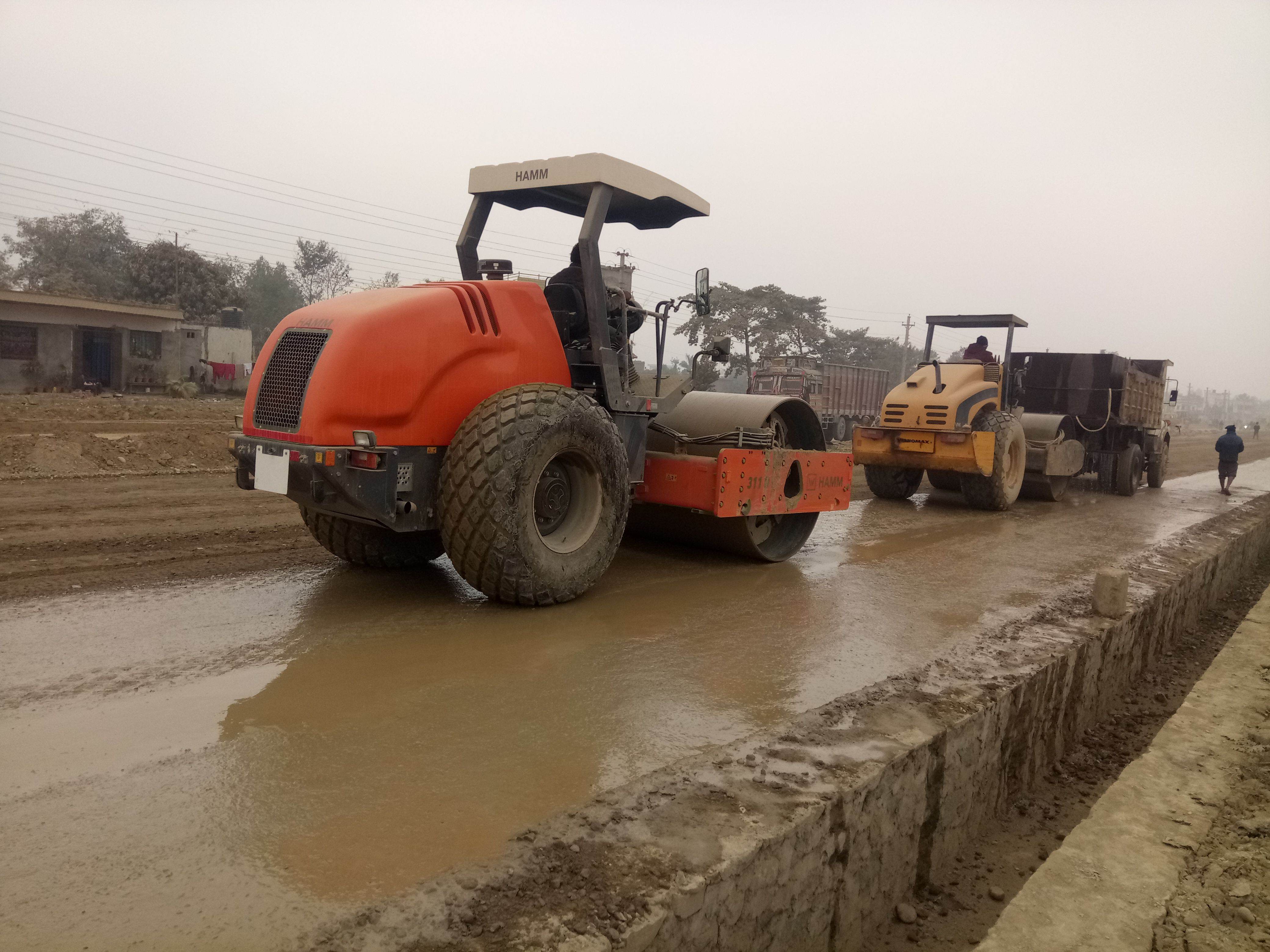Soil Compaction: Providing a Base for Construction
Soil compaction is essential in construction. The failure to displace air from
between soil particles when constructing buildings, roads, parking lots, dams,
walls, swimming pools, or utility trenches inevitably leads to unwanted soil
movement and water penetration into the earth beneath construction projects.
Walls will crack and even fail; pipes will crack and leak; roads become
potholed and undulating.
Problem
Inattention to compaction can lead to significant problems. Without appropriate
compaction control, built structures sett le excessively, and often expensive
foundations are required to compensate for poor site preparation originally.
Mine haulage roads that are ineffectively compacted increase the need for
vehicle maintenance and limit vehicle operation as slower speeds are required.
Mine roads made up of rocks of more than a certain size can result in excessive
wear or puncturing of tyres, which can cost up to $100,000 each to replace. And
landfills that have not been appropriately engineered can result in toxic
chemicals leaching into groundwater.
Solution
One approach to this problem is to develop improved techniques for rolling
dynamic compaction, rubblising and in situ testing and validation of the
compacted space.
Rolling dynamic compaction, in the form of the 4-sided impact roller, enables
the ground to be compacted more efficiently than conventional compaction
equipment such as vibrating drum and sheepsfoot rollers. Appropriately
applied, rolling dynamic compaction can also be used to rubblise rocky
materials, creating a smaller particle size and denser ground surface, which is
particularly appropriate to mine haulage roads. An impact roller is a potentially
efficient compaction method because of its speed and the energy imparted to
the ground.
Working together with Broon’s, we are investigating an impact roller with
outstanding properties for superior compaction, including its speed and the
energy imparted to the ground. Research on the roller has indicated that it will
be capable of:
• compacting thicker loose layers (between 0.5 and 1.5m) than
conventional rollers (typically 300 mm layers)
• travelling at speeds of 10 - 12 km/h, as compared to traditional rollers
which travel at 3 km/h
• compact the ground to greater depths (1 - 4m) as compared to 0.3m,
the impact roller, and
• compact ground with a greater range of soil moisture content than
conventional equipment which means that the ground requires less
Benefit The Mining & Geotechnical Engineering Research
The benefits of rolling dynamic compaction are potentially Group
significant. Its rate of application and potential
effectiveness as a rubbliser means that it may be more efficient than conventional techniques and produces a better road surface, hence saving money in road haulage application.
Refrence-School of Civil, Environmental and Mining Engineering
efficient than conventional techniques and produces a www.ecms.adelaide.edu.au/civeng/research
Would this be a primary reason why houses fall when there is lots of rain or a mud slide is the result of not compacting the soil enough? Thanks for sharing
@originalpost